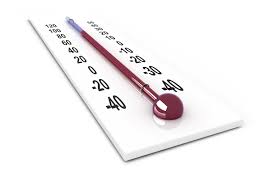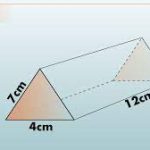Imagine the temperature scale as a bridge between different worlds.
As you stand at the edge of 200°C in Celsius, the allure of its Fahrenheit counterpart beckons.
The conversion from Celsius to Fahrenheit may seem like a mere mathematical exercise, but understanding the implications of this transformation can shed light on the intricacies of temperature measurement across cultures and scientific fields.
Stay tuned to unravel the mysteries of this conversion and discover the significance it holds.
Understanding Temperature Scales
To comprehend temperature scales easily, familiarize yourself with the relationship between Celsius and Fahrenheit. Celsius and Fahrenheit are two common temperature scales used worldwide.
Celsius, also known as centigrade, is based on the freezing and boiling points of water, with 0°C representing the freezing point and 100°C representing the boiling point at standard atmospheric pressure. On the other hand, Fahrenheit is based on a scale where 32°F is the freezing point of water and 212°F is the boiling point.
Understanding the conversion between Celsius and Fahrenheit can help you navigate temperature differences with ease. It’s essential to remember that the two scales have different starting points and intervals. For example, a temperature of 0°C is equivalent to 32°F, and a change of 1°C is equal to a change of 1.8°F. By grasping this fundamental relationship, you can convert temperatures accurately between Celsius and Fahrenheit.
The Formula for Conversion
Understanding the formula for converting Celsius to Fahrenheit simplifies temperature conversion tasks. To convert Celsius to Fahrenheit, you can use the formula: ( ext{F} = \left( ext{C} imes rac{9}{5} \right) + 32 ).
This formula involves multiplying the Celsius temperature by 9/5 and then adding 32 to obtain the equivalent Fahrenheit temperature. The multiplication by 9/5 accounts for the difference in scale between Celsius and Fahrenheit, where water freezes at 0°C but at 32°F. The addition of 32 at the end adjusts the converted temperature accordingly.
Remember that this formula provides a straightforward way to convert temperatures between the Celsius and Fahrenheit scales accurately. By understanding and applying this formula, you can quickly convert temperatures in either direction without the need for complex calculations.
Next, let’s apply this formula to convert 200°C to Fahrenheit and see what it corresponds to on the Fahrenheit scale.
Converting 200°C to Fahrenheit
After understanding the formula for converting Celsius to Fahrenheit, let’s now convert 200°C to Fahrenheit. To convert Celsius to Fahrenheit, you can use the formula: °F = (°C × 9/5) + 32. Plugging in 200 for °C, the calculation would be: (200 × 9/5) + 32 = 392°F. Therefore, 200°C is equal to 392°F in Fahrenheit.
It’s important to note that in Fahrenheit, water freezes at 32°F and boils at 212°F, while in Celsius, water freezes at 0°C and boils at 100°C. This means that 200°C is significantly higher than the boiling point of water in Celsius, which is a scorching temperature. Understanding these conversions can be useful when dealing with international temperature measurements or when trying to interpret weather forecasts in different units.
Now that you know how to convert 200°C to Fahrenheit, you can apply this knowledge to other temperature conversions as well.
Step-by-Step Guide
Begin by following these simple steps to convert Celsius to Fahrenheit. To convert Celsius to Fahrenheit, start by taking the Celsius temperature and multiply it by 9/5. The formula for converting Celsius to Fahrenheit is:
[Fahrenheit = (Celsius imes rac{9}{5}) + 32]
Let’s break it down. Take the Celsius temperature, in this case, 200°C. Multiply 200 by 9/5:
[200 imes rac{9}{5} = 360]
Next, add 32 to the result:
[360 + 32 = 392]
Practical Example Calculation
To grasp the concept more effectively, envision the conversion process from Celsius to Fahrenheit as a straightforward mathematical operation. Let’s take the example of converting 200°C to Fahrenheit. Start by multiplying the Celsius temperature (200) by 9/5, which equals 360.
Next, add 32 to this result, giving you 392. Therefore, 200°C is equivalent to 392°F.
Remember, the formula for converting Celsius to Fahrenheit is °F = (°C × 9/5) + 32. This calculation shows that for every degree Celsius, you multiply by 9/5 and add 32 to get the Fahrenheit equivalent.
Importance of Accurate Conversions
When converting Celsius to Fahrenheit, accuracy matters. Make sure your conversions are precise to avoid errors in your calculations.
Ensuring accuracy is key to obtaining the correct results every time.
Accuracy in Conversions
Ensuring precise conversions is crucial when converting measurements to avoid errors and ensure accuracy. Accuracy in conversions is essential because even small errors can lead to significant discrepancies. When converting Celsius to Fahrenheit, precision is key to obtaining the correct result.
Mistakes in conversions can impact various fields such as science, engineering, cooking, and more. For instance, in scientific experiments, precise temperature conversions are vital for accurate results. Imagine a recipe calling for a specific oven temperature; an inaccurate conversion could ruin the dish.
Therefore, paying attention to accurate conversions is vital to ensure that measurements are translated correctly and tasks are completed with precision.
Precision Is Key
Precision plays a crucial role in accurate conversions, ensuring that measurements are translated correctly without room for error. When converting Celsius to Fahrenheit, even the slightest miscalculation can lead to significant discrepancies in temperature readings. It’s essential to pay close attention to details and use precise conversion formulas to obtain accurate results.
A small error in the conversion process could result in misleading information, affecting scientific experiments, cooking recipes, or any other situation where temperature accuracy is crucial. By focusing on precision, you can guarantee that the converted values are reliable and reflect the intended temperature accurately.
Avoiding Errors
To ensure accurate conversions, it’s crucial to avoid errors in the process of converting Celsius to Fahrenheit. Mistakes can lead to incorrect temperature readings, which can be problematic in various situations.
When converting temperatures, make sure to double-check the formula you’re using and input the correct values. Simple errors, such as mixing up addition and multiplication or misreading the temperature, can result in significant discrepancies in the final conversion. Pay close attention to the units to prevent miscalculations.
Utilize reliable conversion tools or calculators to assist you in obtaining precise results. By being vigilant and meticulous in your conversion process, you can guarantee accurate temperature conversions and avoid potential inaccuracies.
Additional Tips and Considerations
For more accurate conversions from Celsius to Fahrenheit, consider checking multiple sources. While the formula for converting Celsius to Fahrenheit is straightforward, errors can still occur due to rounding or inaccuracies in the conversion process. By consulting different reputable sources or using online conversion tools, you can cross-reference the results to ensure accuracy.
Another consideration is understanding the context of the temperature conversion. For scientific or precise calculations, it may be necessary to use more decimal points in the conversion formula to maintain accuracy. Keep in mind that rounding too early in the process can lead to slight discrepancies in the final converted temperature.
Additionally, when converting temperature values for cooking or other everyday purposes, it’s helpful to remember some common reference points. For example, knowing that 0°C is freezing point and 100°C is boiling point can assist in estimating Fahrenheit equivalents and understanding the significance of the temperature in different scales. By considering these tips and factors, you can enhance the accuracy of your Celsius to Fahrenheit conversions.
Frequently Asked Questions
You can’t convert Celsius to Fahrenheit directly without using a formula. The two temperature scales have different intervals, so a formula is needed for an accurate conversion. It’s important to follow the correct calculation method.
In daily life, understanding Celsius to Fahrenheit is handy for cooking, weather reports, and setting thermostat temperatures. Knowing this conversion helps you adapt recipes, dress appropriately for weather, and control indoor comfort levels more effectively.
In various countries and industries, Celsius and Fahrenheit are both used, with some preferring one over the other. Understanding the nuances can be beneficial, ensuring effective communication and accurate temperature interpretations across diverse contexts.
Conclusion
So, the next time you need to convert Celsius to Fahrenheit, remember the formula and follow the simple steps outlined in this guide.
Understanding temperature scales and accurate conversions are important in various fields, from cooking to science.
With a little practice, you’ll be able to convert temperatures quickly and accurately.
Keep these tips in mind for all your temperature conversion needs!


